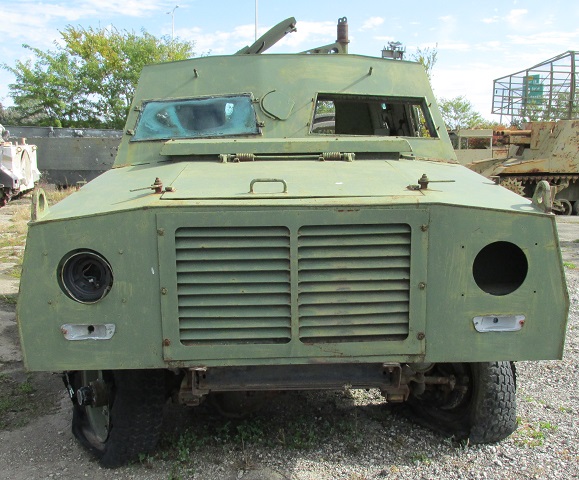
Peacekeeper at the Russell Military Museum.

The fact that the Peacekeeper was an armored civilian truck can be gleaned from its appearance. This machine has seen better days, but it still allows us to see the armored engine grille and air inlet near the windscreen, as well as the hood's handles and sprung hinge. The roof hatch is partially open, and the machine gun mount is pointing toward the vehicle's left side. Mounts for the windshield wipers protrude from above the front windows, but the wiper arms are gone, along with the front bumper, driver's window, and left headlight housing. The studs for the driver's window's retaining clips can be seen around the empty opening. A firing port was provided between the drivers.

This vehicle retains its headlights, turn signals, windows, and wiper arms, as well as the front bumper with winch, but the armored grille has been replaced with a mesh covering. Rotating police lights are atop the front corners of the roof.
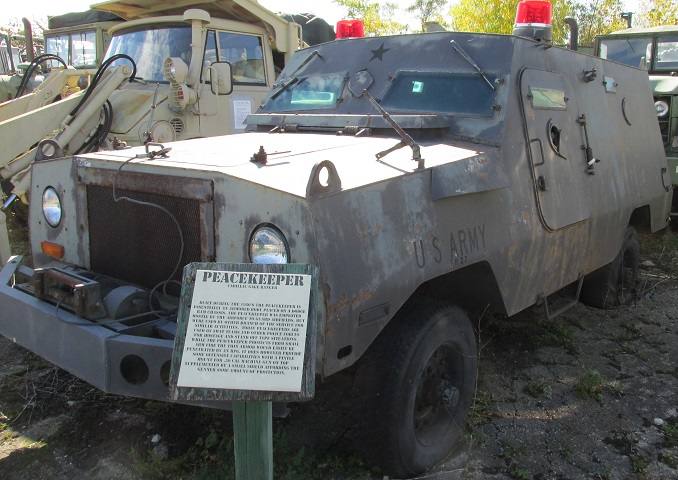
A long vision block was above a firing port in each of the front doors, and the passenger compartment featured a vision block and firing port as well. The fuel filler cover can be seen at the lower rear corner of the hull.

The right rear door is open, and the firing port covers are missing from this door, the front door, and the passenger compartment. Air vents on the side of the engine compartment can more easily be seen from this angle.

The thickness of the armor can be deduced from the open rear door, and the firing port and vision block can be seen in the hull side behind the driver. The left-side rear door is absent. The panel warning of monoxide is from another vehicle.
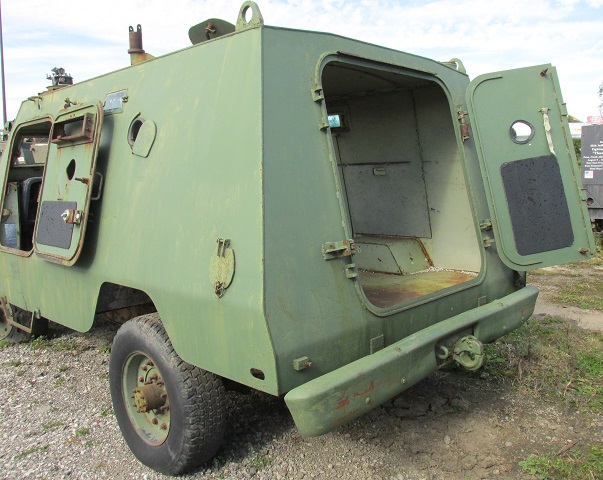
The rear bumper featured an opening for a towing pintle, and padding was provided below the firing ports on the doors.
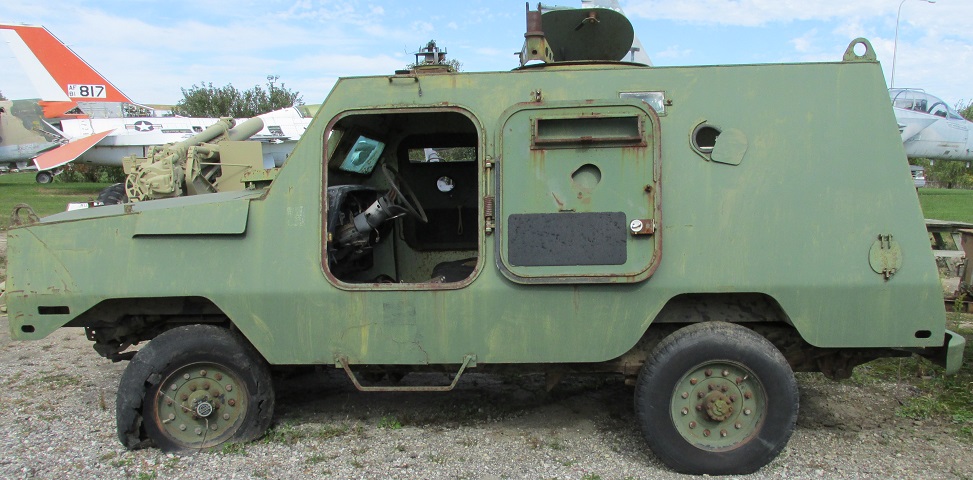
The driver's door is missing the vision block and firing port cover, but the padding remains. Lifting eyes were found at the top corners of the hull.

Looking into the driver's door, the vehicle's data plate is attached to the door frame, the parking brake release is to the bottom left of the instrument cluster, and the passenger seat can be seen across the transmission tunnel.
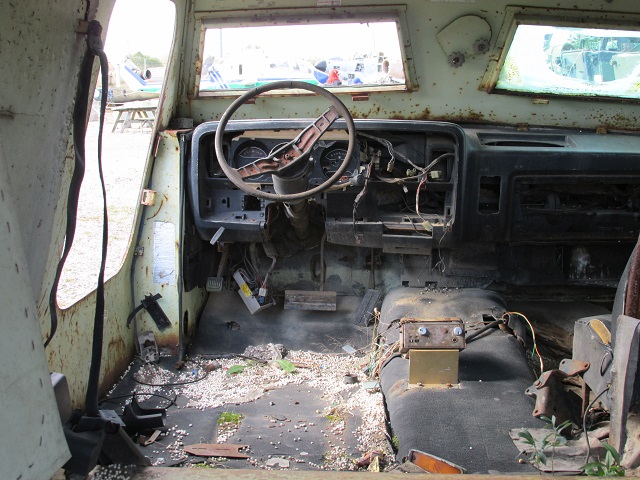
A view from behind where the driver's seat would normally be shows the decidedly civilian-looking dashboard. The parking brake, brake, and accelerator pedals are left to right; the gearshift selector is on the steering column; and the battery charge and fuel level gauges can be seen on the top left and right, respectively, behind the steering wheel. A seatbelt hangs limply to the left.
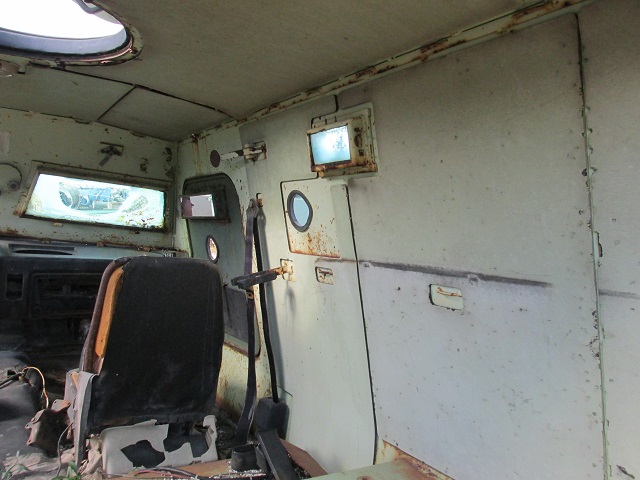
The front right passenger compartment housed the passenger seat and seatbelt, immediately behind which is a rifle clip. Footman loops are welded to the side of the passenger compartment farther to the rear. The inner side of the vision block and firing port opening can be seen as well.

A view of the roof of the passenger compartment reveals the open hatch and a dome light directly to its front. The gunner's opening in the machine gun mount was eccentric to the opening in the roof; the mount is pointing to the left on this vehicle.
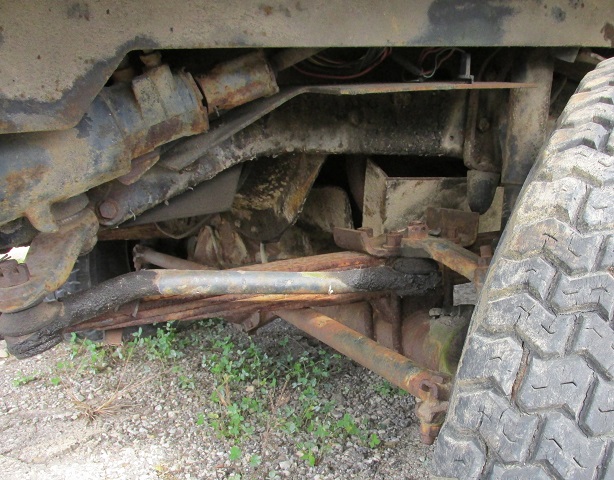
Details of the front suspension and leaf springs are seen in this image.
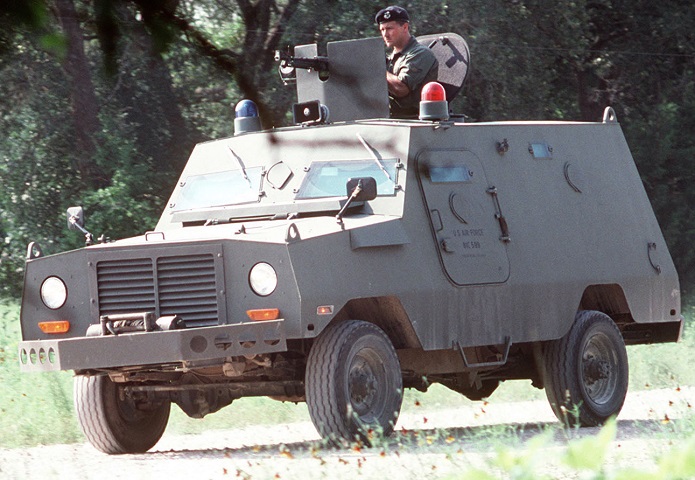
This vehicle comes complete with vision blocks, windows, and firing port covers; the winch is also mounted on the front. A 7.62mm M60 machine gun is mounted on the roof hatch. Note also the roof-mounted siren/speaker and flashing lights. These men were part of the 90th Security Police Group. (Picture taken 25 July 1983 by MSG Buster Kellum; available from the National Archives.)
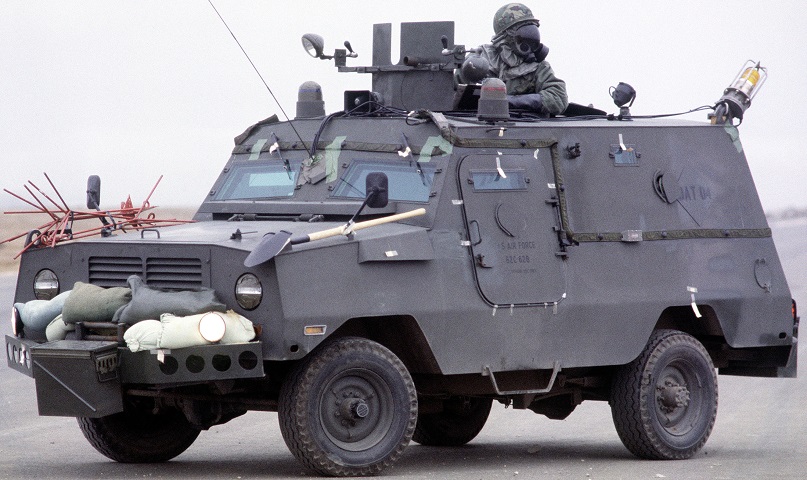
Sandbag protection has been added to the front, and sensors and a yellow strobe for MILES wargaming gear can be seen on the vehicle. A stowage box is mounted on the front bumper. The headlight apertures have been reduced, but extra driving lights can be seen on the bumper, and spotlights are visible on both the empty machine gun mount and the roof. In this image, members of the 52d Civil Engineering Squadron are evaluating runway damage during Exercise Salty Demo '85. (Picture taken 29 April 1985; available from the National Archives.)
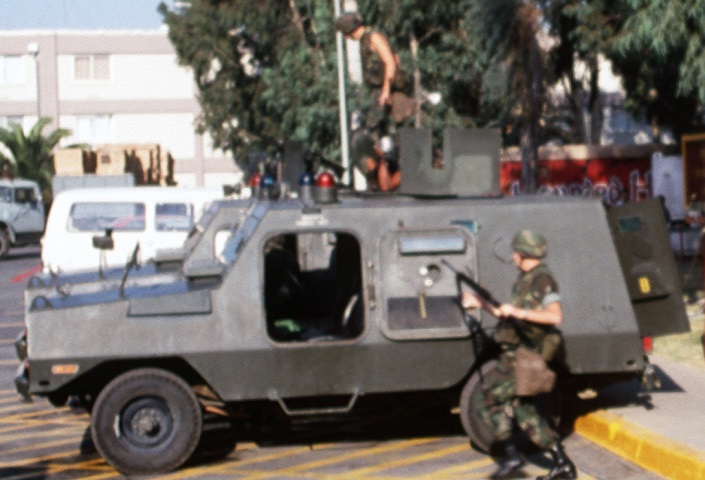
This image features two vehicles parked side by side. On the near machine, the rear-hinged driver's door and the rear doors are open. Note the vision block and firing port in the rear door as well. (Picture taken 23 September 1987 by PH2 Landenberger; available from the National Archives.)
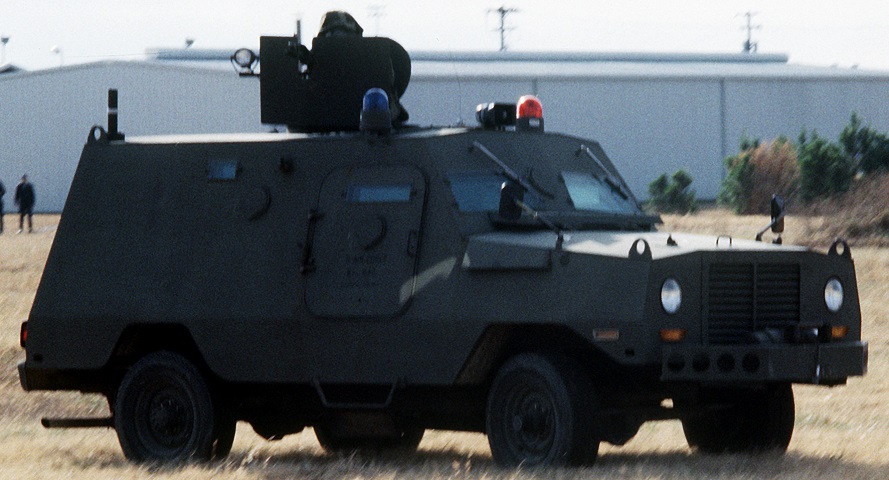
The exhaust pipe can be seen on this vehicle behind the right rear wheel. This picture was taken during a chemical warfare evaluation by the 4th Tactical Fighter Wing. (Picture taken 28 November 1984; available from the National Archives.)
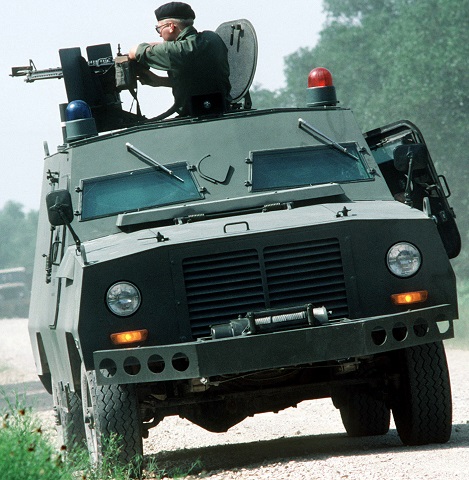
The roof hatch, machine gun mount, and gunner's shield are shown to good effect in this image. (Picture taken 25 July 1983 by MSG Buster Kellum; available from the National Archives.)